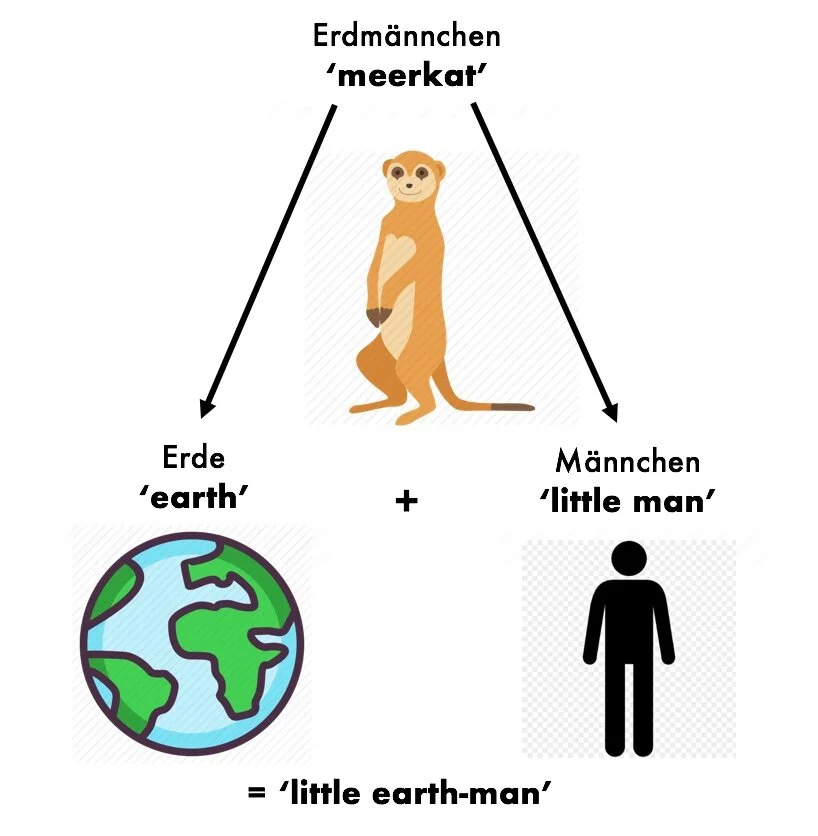Compound Interest, Part 2: Chinese-Derived Compounds
China’s largest bamboo forest, Shunan Bamboo Forest (蜀南竹海).
INTRODUCTION
The LanGo team is currently working on our third book for learners of Korean [watch this space for updates], an introduction to and dictionary of Sino-Korean compound words. This blog post has grown out of the work on that project.
“Sino-Korean” (SK) is the term for words and expressions which Korean has borrowed from Chinese. These two languages are genetically unrelated, but Chinese (the first language in East Asia to be written down) has been a source of thousands of borrowed terms over the centuries. Similarly, we speak of “Sino-Japanese” (SJ) and “Sino-Vietnamese” for words which Japanese and Vietnamese have adopted from Chinese. Collectively these classes of words are called “Sino-Xenic” (SX; from Greek ξένος /ksénos/ ‘stranger’). In this post we use Zh as an abbreviation for Zhōngwén ‘Chinese language,’ Ko for Korean, and Ja for Japanese.
Compound words are what we call words made up of smaller meaningful parts which themselves also have the status of words. In many (though not all) compounds, one of the components is called the “head,” that is, the component of which the whole compound is a subtype. More on this below.
This kind of word contrasts with complex words made up of a single root or stem with prefixes or suffixes added to it, such as English “un-believ-able.” Complex words like this are plentiful in Korean and Japanese but nearly non-existent in Chinese: of the few that are in the language, examples include ‘we’ 我們 wǒmen, ‘they’ 他們 tāmen, ‘what?’ 什麼 shénme.
This post discusses some of the most important ways that words are combined to produce compounds in Chinese (in a wide sense, including SK and SJ) and features comparable examples from English and other languages. Despite numerous important differences among these languages, we will see that they share much in how they form compounds.
NOTE ON CONVENTIONS
In this post we will include input instructions for Chinese characters (Hànzì/Hanja/Kanji) between angled brackets. The input system is called Cāngjié; in this system all characters (meaning ‘written words’) are reduced to a string of at most five Qwerty keystrokes, and as it is a purely graphic system it allows us to write words we haven’t seen before, and whose pronunciations we may not know. For an introduction and overview see here.
Cāngjié input keystrokes are shown in < angled brackets >. As an example, the first compound we consider in the next section is written 山林. The first component, the mountain 山, is one of the system’s basic elements and we enter it with the U key. To write the second component, 林, we break this character down into two trees: 木 木. The tree is entered using the D key, so <dd> retrieves this character. Other characters made up of these elements include 出 <uu>, 屾 <uu>, 森 <ddd>.
Wherever a compound word cited is clearly segmentable, we put an interpunct (·) between components. In cases where fusion has occurred, this symbol is omitted.
TYPES OF COMPOUNDS
What do we mean by “compound types”? Consider one Chinese-derived example which is fairly simple to write: 山林 <u dd>. The components are 山 ‘mountain’ and 林 ‘forest,’ but the meaning of this compound word varies from language to language:
Chinese 山林 shān·lín means ‘mountains and forests’
Japanese さんりん san·rin means ‘mountain forest’ (that is, a forest on a mountain)
Korean 산림 sallim (from san·rim) means simply ‘forest’
These are, of course, three distinct languages, but a comparison of these related terms can tell us a lot about the ways in which the meanings of compound words are built up from their components, and the ways in which compounds differ.
To derive the meaning ‘mountains and forests’ in the Chinese compound 山林 shān·lín we add the conjunction “and.” This “additive” compound type is very frequent in Chinese but nearly non-existent in English: we have “bitter·sweet” (if taken to mean ‘bitter and sweet’) and some Italian terms like “piano·forte” (soft+loud, nowadays called the “piano”) and “chiaroscuro” (light+dark; it refers to the use of brightness contrasts to convey volume). “Hear·say” may also be an example.
For Sino-Japanese (a Japanese expression whose pronunciation is borrowed from Chinese), 山林 さんりん san·rin is made of these same two components, and note that English uses this very same compound type: the term “mountain forest” is a kind of forest, not a kind of mountain.
The Sino-Korean term 산림 sallim is a compound word in terms of its origin and its structure, but no longer in its meaning, which is just ‘forest.’ As Korea is such a mountainous country (about 70%), almost all forests there are mountain forests. This development of the sense of this word reminds us that words in all languages, in all places, change their meanings over time.
To use an algebraic type of notation, using A to mean the first component and B to mean the second, in the first type of compound (which has been aptly named “Co-compound”) an expression AB means ‘A and B’; while in the second a compound AB is a subtype, a kind of B (and not of A: a ‘mountain forest’ is not a kind of mountain). Let us call this a “Sub-compound.” English examples are numerous and include “art student” (a kind of student); “house·cat” (a kind of cat); “baby food” (a kind of food). Note that some English compounds are written without a word space, others with a hyphen, and some with a space in between. If I say, “Please give the baby food,” I have not used a compound: “baby” and “food” here are two nouns with distinct syntactic functions. To determine whether a given instance is in fact a compound we must often look at the sentence it occurs in.
A parallel type where the resulting compound has the reverse order is seen in English terms borrowed from French such as “court martial” (a kind of court) and “surgeon general” (a surgeon/doctor, not a kind of general).
Aside from being inherently interesting, the structure of compound words will be useful to you in your language study: learning to recognize types will help you remember the meanings of compound words, reinforce your vocabulary, and (we hope) help you understand new terms on sight by breaking them down.
In this blog post we’ll learn about these types of compounds in Table 1 (click here for the pdf).
Table 1. Types of compounds. ¹The Korean term may rather be a Co-compound meaning ‘[sequence of] long and short.’ ²Can also refer to the condition or, in an earlier period, a police officer, where the plural is apparently “flatfoots”!
Each of these types has a section devoted to it below which will include further examples.
Adverbial compounds
In this type of compound, the second component is a verb, and this is modified by a first component with adverbial meaning. This first component can denote the manner, the time, or the place of a verbal event. In compounds coined in Modern English we have many nouns: “back·draft,” “morning run”; but few verbs: “side·step,” “down·load.”
Some terms English has borrowed from other languages belong to this class:
“bis·cuit” from French and its cousin word, “bis·cotto” from Italian (twice+cooked)
“co·habit” from Latin (together+live)
“pre·dict” from Latin (before+say)
“palin·drome” from Greek (back+run)
Chinese examples include:
‘spread, become popular’ 流行 <eyiu hommn> (flow[ing]+move)
Zh liú·xíng
Ko 유행 yu·haeng
Ja りゅうこう ryū·kō
‘advance, progress’ 進步 <yog ylmh> (forward+step)
Zh jìn·bù
Ko 진보 jin·bo
Ja しんぽ shin·po
‘epilogue, postscript’ 後記 <hovie yrsu> (after+note)
Zh hòu·jì
Ko 후기 hu·gi
Ja こうき kō·ki
Antonym compounds
While Chinese affords several examples of this type of expression, English seems to have none. To get a sense of this compound class, imagine that instead of “polarity,” we said “plus-minus” -- that is, we name a continuum after its two endpoints. Where English uses abstract nouns like “polarity,” “length” (see the Table above), “size,” and “weight,” Chinese expresses these concepts by simply naming the opposing poles. Thus for ‘size’ we have 大小 <k nc> Zh dà·xiǎo, Ko 대소 dae·so (big+small) (Ja writes the unrelated Native Japanese word ‘size’ おおさ ō-sa this way), and for ‘weight’ 輕重 <jjmvm hjwg> Zh qīng·zhòng (light+heavy), borrowed into Ko as 경중 gyeong·jung which means ‘relative importance’: somewhere on the scale from light/unimportant to heavy/important.
Other Chinese-derived examples include:
‘adjustment’ 加減 <ksr eihr> (add+decrease)
Zh jiā·jiǎn
Ko 가감 ga·gam
Ja かげん ka·gen
‘intensity, strength’ 強弱 <nili nmnim> (strong+weak)
Zh qiáng·ruò,
Ko 강약 gang·yeok, also has the meaning ‘powerful & feeble, strong & weak,’ constructed as a Co-compound
Such compounds may be regarded as a subclass of Co-compounds (see below), and in all such terms neither component is the head of the compound (i.e. ‘size’ is not a type of big nor a type of small, but the continuum between those extremes).
Blackbirds
The English compound word “blackbird” exemplifies this type: ‘a kind of bird that is black.’ This is a subtype of Sub-compound where the first component is, in many English examples, an adjective, and the second the head noun. In Chinese what we call “adjectives” are best regarded as a class of verbs (intransitive and stative), so compare also the type below that we have called Turntable. In the term for ‘capital’ we have a case with noun+noun. Some examples in Chinese, Korean, and Japanese:
‘capital city’ 首都 <thbu janl> (head+city → city that is the head)
Zh shǒu·dū
Ko 수도 su·do
Ja しゅと shu·to
‘white hair’ 白髮 <ha shikk> (white+hair → hair that is white)
Zh bái·fà
Ko 백발 baek·bal
Ja 白髪 (with a slightly different form for the second character) はくはつ haku·hatsu
Some English examples of Blackbird compounds, including cases of noun+noun:
blue·print ‘print that is blue’
mother·ship ‘ship that is (like) the mother,’ compare “metro·polis,” from Greek (mother+city)
dream·team ‘team that is (like) a dream’
under·dog ‘dog that is under’
German, a language that is famously rich in long compound words, also has Blackbird-type compounds, such as Schwarz·wald ‘Black Forest’ (black+forest), Hoch·mut ‘arrogance, hubris’ (high+mood), Rot·wein ‘red wine’ (same components as the English term), and Lange·weile ‘boredom’ (long+while). Note that the adjective lange here is in the feminine form, while in the derived adjective lang·weilig this inflection is absent.
Co-compounds
We discussed this type above, and it is very widespread in Chinese, where we find verb+verb examples (this includes the adjective+adjective type) as well as noun+noun. The distinguishing trait of this class is that the meaning ‘_ and _’ is implied.
With verbs it is often hard to distinguish this kind of compound from adverbial+verb types (word class being very fluid in Chinese), as well as from Synonym compounds. Since the English specimens of this type known to us were nearly exhausted above, here’s an extra-large helping of examples in Chinese, Sino-Korean, and Sino-Japanese:
‘childcare’ 保育 <ord yib> (protect+nourish)
Zh bǎo·yù
Ko 보육 bo·yuk
Ja ほいく ho·iku
‘couple’ 夫婦 <qo vsmb> (husband+wife)
Zh fū·fù
Ko 부부 bu·bu
Ja ふうふ fū·fu
‘parents’ 父母 <ck wyi> (father+mother)
Zh fù·mǔ
Ko 부모 bu·mo
Ja ふぼ fu·bo [Note that the fu/bu component is not the same as in the last example!]
‘life and death’ 生死 <hqm mnp> (life+death)
Zh shēng·sǐ
Ko 생사 saeng·sa
Ja せいし sei·shi
‘full name’ 姓名 <vhqm nir> (surname+name)
Zh xìng·míng,
Ko 성명 seong·myeong,
Ja せいめい sei·mei
Flatfoots
This type is perhaps our favorite kind of compound word. Consider the term we have chosen as a name: a flatfoot is not a kind of foot (then it would belong in the Blackbird class!) but a condition of someone who has a flat foot (or feet). The meaning of ‘having’ is present but not overtly expressed by any component. Compare this with the Co-compound type, where the meaning ‘and’ is inherent but also not expressed.
Flatfoot compounds are not the most frequent in English and are often overlooked in classifications of compound words, but if you know where to look you can find them. They are popular as schoolyard insults: think of “four-eyes” (meaning ‘having four eyes,’ that is, wearing glasses; not a type of eye, and not referring just to someone’s eyes), “numb-skull” (‘having a numb skull,’ not a type of skull), and “bigmouth” (‘having a mouth that is big,’ talkative; not a type of mouth). In English specimens, the first component is most often an adjective, a color term, or a numeral, and the second component is a body part.
If we expand our scope to words borrowed into English, we find many more: from Greek we get “platy·pus” (‘having flat feet’), “octo·pus” (‘having eight feet’), and “poly·p” (‘having many feet’; final p is from Greek pous ‘foot,’ giving -pus in Latin, where the final -us was reinterpreted as the masculine noun ending; this was often dropped in French and English) as well as “pachy·derm” (‘having thick skin’) and “poly·mer” (‘having many parts’). Latin is the source of Flatfoot-type compounds such as “centi·pede” (‘having 100 feet’) and “milli·pede” (‘having 1,000 feet’). English animal names such as “small·mouth” (‘having a small mouth,’ a kind of bass; not a type of mouth) and “hammer·head” (‘having a head like a hammer,’ not a kind of head) also belong to this class.
Some negative compounds belong here too, such as “a·theist” (‘having no gods,’ from Greek) and “irregular” (‘having no rule,’ from Latin; ir- is a form of negative in-). Chinese-derived examples of Flatfoot compounds, aside from ‘agreement’ (same+idea) mentioned in the table above, include:
‘offspring of the same parents, sibling’ 同生 <bmr hqm> (same+birth)
Zh tóng·shēng,
Ko 동생 dong·saeng,
Ja どうせい dō·sei
‘youth, young boy’ 少年 <fh oq> (few+years → person who has few years)
Zh shào·nián
Ko 소년 so·nyeon
Ja しょうねん shō·nen
‘head-shaped’ 頭狀 <mtmbc vmik> (head+shape → having the shape of a head) (not a compound recognized by the Chinese dictionaries I consulted; the reading would be tóu zhuàng)
Ko 두상 du·sang
Ja とうじょう tō·jō
‘single, unmarried person’ 獨身 <khwli hxh> (lone+body → having a lone body)
Zh dú·shēn
Ko 독신 dok·sin
‘compassion, sympathy’ 同情 <bmr pqmb> (same+feeling → having the same feeling, similar in meaning to the Greek source of our word “sym·pathy” and the Latin source of “com·passion”)
Zh tóng·qíng
Ko 동정 dong·jeong
Ja どうじょう dō·jō
Negative compounds
The table above listed English negative prefixes un-, in- and its variants (from Latin), and a-/an- (from Greek). Words that feature these, such as un-knowing, i-gnorant, and a-gnostic (all meaning ‘not knowing’ or ‘having no knowledge’; the i- of “ignorant” is a variant form of the prefix in-) cannot really be called compounds, because the prefix does not occur as an independent word.
In Chinese, however, the common negators 不, 非, 否, and 無 were all independent words in the classical language. Examples of compound derivatives:
‘grievance, resentment’ 不平 <mf mfj> (not+fair)
Zh bù·píng
Ko 불평 bul·pyeong
Ja ふへい fu·hei
非常 <lmyyy fbrlb> (not+ordinary)
Compare
Zh fēi·cháng ‘extraordinary’
with
Ko 비상 bi·sang and
Ja ひじょう hi·jō meaning ‘emergency’
‘negation, denial’ 否定 <mfr jmyo> (negate+fixed)
Zh fǒu·dìng
Ko 부정 bu·jeong
Ja ひてい hi·tei [The Ja reading hi (older *pi) reflects a different word in Middle Chinese from the Zh and Ko words shown here.]
‘invalid’ 無效 <otf ykok> (not:have + effect)
Zh wú·xiào
Ko 무효 mu·hyo
Ja 無効 <otf ykks> むこう mu·kō
This is a very important and abundant class of compound words in Chinese and Sino-Xenic.
Pickpockets
Compare the English compounds “buzz·kill” and “kill·joy.” They’re both Agent nouns, where the whole term means ‘someone who VERBs OBJECT,’ but they differ in the order of their components:
Buzz·kill: someone who kills (B) someone’s buzz (A) [Object+Verb]
Kill·joy: someone who kills (A) others’ joy (B) [Verb+Object]
In English the default type has Object+Verb order as in “buzz·kill”, and often the agentive suffix -er: “block·buster,” “boot·black”; the Pickpocket type with Verb+Object is idiosyncratic and less numerous in English: “turn·coat,” “lack·luster,” “know-nothing.” In Chinese, on the other hand, Verb+Object is the only order available, and the compound tends to have an abstract meaning, rather than agentive: for example the compound ‘climb+mountain’ refers to the activity, not to mountain-climbers. Examples of this frequent Chinese Verb+Object compound type include:
‘reading’ 讀書 <yrgwc lga> (read + book/writing)
Zh dú·shū
Ko 독서 dok·seo
Ja 読書 どくしょ doku·sho
‘mountain-climbing’ 登山 <nomrt u> (climb+mountain)
Zh dēng·shān, Ko 등산 deung·san,
Ja とざん to·zan
‘disappointment’ 失望 <hqo ybhg> (lose+hope)
Zh shī·wàng,
Ko 실망 sil·mang,
Ja しつぼう shitsu·bō
‘be famous’ 有名 <kb nir> (have+name)
Zh yǒu·míng,
Ko 유명 yu·myeong,
Ja ゆうめい yū·mei
An apparent exception to this Chinese rule is
‘suicide’ 自殺 <hbu kchne> (self+kill)
Zh zì·shā
Ko 자살 ja·sal
Ja 自殺 じさつ ji·satsu
Here the component ‘self’ 自 (zì/ja/ji) may be an adverb rather than a noun object. In Sino-Korean and Sino-Japanese we do find compounds with true Object-Verb order, and this is due to the fact that Ko and Ja use this word order in sentences: compare the Native Japanese compound 山登り yama·nobori ‘mountain-climbing’ (mountain+climb(ing)) with its Sino-Japanese synonym 登山 to·zan (climb+mountain) mentioned above.
Pickpocket-type compounds are common in Romance languages: note Spanish lava·platos (wash+plates) ‘dishwasher’ and French gratte-ciel (scratch+sky) ‘skyscraper.’
Starstrucks
This class is also a sub-type of Sub-compound: being starstruck is a kind of being struck. In this type the first component, a noun, denotes either the agent or the means by which the verb (second component) is accomplished. English specimens include “wind·swept,” “employee-owned,” and “government-mandated.”
In Chinese and Sino-Xenic this is not one of the larger compound types, but we do find a few examples:
‘good luck’ 幸運 <gtj ybjj> (fortune+move[d]) -- one possible interpretation
Zh xìng·yùn
Ko 행운 haeng·un
Ja こううん kō·un
The next compound also contains 運, but as a noun with the meaning ‘fortune’:
‘fate’ 運命 <ybjj omrl> (fortune+mandate[d])
Zh yùn·mìng
Ko 운명 un·myeong
Ja うんめい un·mei
‘the whole world/country/empire’ 天下 <mk my> (heaven+bestow[ed]) -- here too other interpretations are possible
Zh tiān·xià
Ko 천하 cheon·ha
Ja てんか ten·ka
Synonym compounds
We turn now to a very large and important class of Chinese compounds: those consisting of two synonyms, or words that have the same meaning. English speakers generally avoid such collocations as redundant, but one such term has come into the language from Chinese Pidgin English, a kind of contact language, and found widespread acceptance: “look-see” (noun). The English verbs “look” and “see” are not interchangeable, the former being intransitive and the second transitive, but both denote receiving visual impressions.
Some common Chinese examples of this type:
‘life’ 生活 <hqm ehjr> (life+life)
Zh shēng·huó
Ko 생활 saeng·hwal
Ja せいかつ sei·katsu
‘bathing’ 沐浴 <ed ecor> (bathe+bathe)
Zh mù·yù
Ko 목욕 mog·yok
Ja もくよく moku·yoku
‘good, fine’ 良好 <iav vnd> (good+good)
Zh liáng·hǎo
Ko 양호 yang·ho
Ja りょうこう ryō·kō
‘child’ 兒童 <hxhu ytwg> (child+child)
Zh ér·tóng
Ko 아동 a·dong
Ja 児童 じどう ji·dō
Turntables
Last but not least is another type of Sub-compound. Like Pickpockets, the compound words in this class consist of a verb plus a noun, in that order; but rather than being the object, this noun component names the broader category: a turn·table is a table that turns.
Turntable compounds are numerous in English, and new ones are readily coined and understood. One recent creation is “fail·son,” meaning ‘a son who fails/is a failure.’ Examples that have been in English longer include “zoom lens” (‘a lens that zooms’), “race horse” (‘a horse that races’; other interpretations are possible for these two examples), “glow stick” (‘a stick that glows’).
German has Turntables as well, such as Glüh·birne ‘lightbulb’ (glow+pear, from its shape: ‘pear that glows’) and Fahr·zeug ‘vehicle’ (drive+gear → gear that drives).
Some Chinese Turntable compounds:
‘result, outcome’ 結果 <vfgr wd> (solidify+fruit → fruit that has solidified)
Zh jié·guǒ
Ko 결과 gyeol·gwa
Ja けっか kekka
‘planet’ 行星 <hommn ahqm> (move+star → star that wanders; ‘wanderer’ is also the meaning of “planet,” from Greek)
Zh xíng·xīng
Ko 행성 haeng·seong
Ja こうせい kō·sei
‘spectator(s)’ 觀眾 <tgbuu wlooo> or 觀衆 <tgbuu htoho> (observe+crowd → crowd that observes)
Zh guān·zhòng
Ko 관중 gwan·jung
Ja 観衆 かんしゅう kan·shū
CONCLUSION
One thing to bear in mind is that not all compounds consist of just two components; many 3- and 4-part ones can be broken down into 2-parters. For example, the term for ‘microscope’ consists of three components: show+tiny+lens
顯微鏡 <afmbc houuk cytu>
Zh xiǎn·wēi·jìng
Ko 현미경 hyeon·mi·gyeong
Ja 顕微鏡 けんびきょう ken·bi·kyō
This term is best understood not as a stringing together of three components directly, but as a meta-compound, meaning ‘a compound which has at least one shorter compound within it.’ Reflecting further on this, we conclude that the structure is not *[ show + (tiny+lens) ], but rather [ (show+tiny) + lens ]: ‘a lens that shows tiny things,’ meaning that we have a Pickpocket compound (show+tiny) within a larger Turntable compound.
If you find yourself acquiring “compound interest,” stay tuned for our forthcoming blog post on SK/SX correspondences, and look out for our upcoming book all about Sino-Korean compound words.
MINI-QUIZ
Which compound types do the following words belong to? Leave a comment below with your answers, or tweet us @langoinstitute.
[1] English “Dread·nought” comes from the verb “dread” (roughly = ‘fear’) and “nought,” an old-fashioned word meaning ‘nothing.’ It was coined as the name of a type of warship, and was later applied to a big-bodied style of acoustic guitar.
[2] Sanskrit rāja·putra (king+son) has at least two distinct meanings:
[2a] ‘having sons who are kings’
[2b] ‘son of a king’ (compare Chinese 王子 wáng·zǐ [monarch+child] ‘prince, son of a monarch’)
[3] Swedish far·mor (father+mother) means ‘paternal grandmother’ (compare 父母 fù·mǔ above).
































![Table 1. Types of compounds. ¹The Korean term may rather be a Co-compound meaning ‘[sequence of] long and short.’ ²Can also refer to the condition or, in an earlier period, a police officer, where the plural is apparently “flatfoots”!](https://images.squarespace-cdn.com/content/v1/5bb3b241e8ba44ae9c39e05b/1620933239378-ZWMLLHFBR0LG6BEQ12QM/typesofcompounds.jpeg)
Tools for helping you master some of the trickier points of German grammar, whether you’re learning it for the first time or wanting to review the fundamentals. Los geht’s!